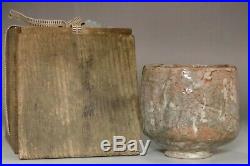
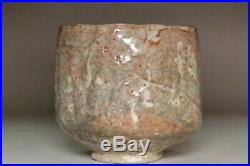
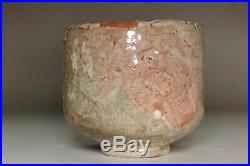
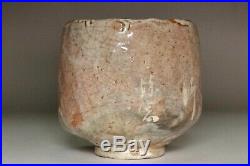
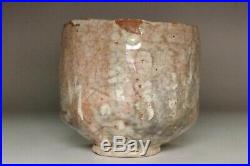
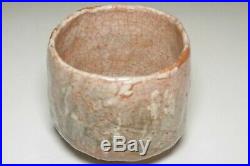
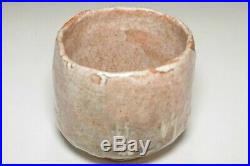
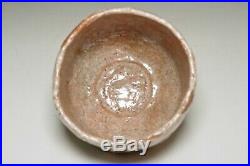
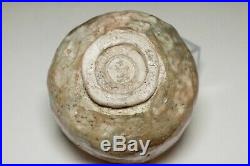
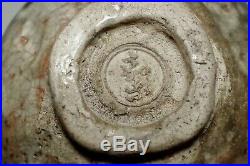
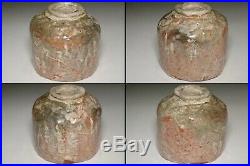

10cm (3 1516in) x 9.8cm (3 5564in). 9.5cm (3 4764in). Weight: 303g (gross 591g). Raku ware is a type of pottery that is traditionally and primarily used in the Japanese tea ceremony, most often in the form of tea bowls called Raku chawan. Rikyu also served ruler Toyotomi Hideyoshi. In the late Momoyama era, Rikyu ordered Raku Chojiro to make kuro raku chawan. Kuro means black in Japanese. Hideyoshi disliked black, and Rikyu ordered the black bowls knowing this. It is also said that Rikyu did this because Hideyoshi was considering invading Korea at that time. Sen no rikyu was against Hideyoshi actually. Unfortunately Hideyoshi ordered Rikyu to commit ritual suicide (seppuku) for another reason. After he died, his philosophy, “wabi” lived on with the black Raku bowls. Raku ware became one of the famous Tea Ceremony bowl styles to the present day. Wabi means accepting imperfection. This is a beautiful Japanese philosophy. Raku ware is a type of pottery that is usually made without a wheel, formed only with the hands and a spatula according to a method called “hand kneading, ” then fired at 750- 1,100 and softly glazed. In reflection of the aesthetics of Sen no Rikyu and his contemporaries, its characteristics include slight distortions from hand-kneading and a thick form. They are used as tea ceremony tools, such as chawan (tea bowls), hanaire (vases), and mizusahi (lidded water pots). Red clay is fired into a bisque, then a transparent glaze is applied and the piece is fired at 800. Aka-raku is famous for Honami Koetsu, a man deeply involved with the Raku family, and the pieces that introduced the way of Raku. In Rikyu’s episode, it is said that Hideyoshi disliked Kuro-raku, preferring Aka-raku. Our products are mostly secondhand goods. + We usually use corrugated cardboard box and Bubble Wrap for safe package. If the items lost or broken, please let us know. Attention Please be sure to view photographs carefully in order to avoid errors. Many of the items we sell are vintage so please understand that they will not all be in perfect condition. Thank you very much for visiting!! The item “Kurita Kikujiro (1866-1946) Vintage Japanese pottery tea bowl #3434″ is in sale since Friday, March 15, 2019. This item is in the category “Antiques\Asian Antiques\Japan\Bowls”. The seller is “cz812ce2009″ and is located in konan-ku yokohama-shi. This item can be shipped worldwide.
- Region of Origin: Japan
- Age: 1900-1940
- Primary Material: Porcelain & Pottery
- Maker: Kurita Kikujiro (1866-1946)
- Original/Reproduction: Vintage Original
- Type: Bowls